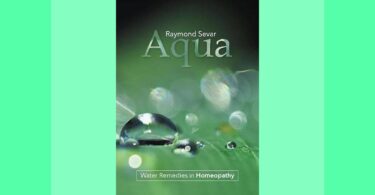Title: Mammals in Homeopathy – Volume 1 And 2
Author and publisher: Dr Ghanshyam Kalathia
First edition 2021, India, hardcover, total 561 pages
Reviewer – Vatsala Sperling
An exponential increase in the number of animal remedies available to date requires that the practitioners experienced in use of these remedies do come forward and present their findings to the greater homeopathic community.
Dr. Ghanshyam Kalathia has indeed come forward, first, with a book on Invertebrates in Homeopathy and now, Mammals in Homeopathy, volume 1 and 2. These two volumes are companions, so, do read both.
It is rather refreshing to see that the two volumes of Mammals in Homeopathy offer a clear-cut, direct, uncluttered and a very practical approach to studying mammal remedies as we move through a total of 29 chapters and 22 cases.
While both volumes are full of useful information and insight, the last chapter, 29 – Quick reference – is an icing on the cake, so to speak. In this chapter, you are treated to what is called a thematic index. Thematic index, as Dr Kalathia explains, is a compilation of extracted themes written in alphabetical order.
Take for example – Lac suilinum and Lac asinum are similar in many ways; Lac felinum and Vulpus vulpus also share common characteristics. Thematic index enables us to find out all the common themes running through the remedies and share them on a common platform called “thematic index”.
As a result, whenever we are looking for a particular theme, we can find all the mammal remedies that share the particular theme. Thematic index pulls together all the mammalian themes and helps us in distinguishing between remedies that share a common theme.
From pages 496 till 507 it contains an elaborate thematic index for mammalian remedies, and it looks exactly like a repertory. This one aspect is a brilliant high point of these two volumes on mammal remedies.
Another strong point presented in chapter 29, is a table of mammal remedies and their miasms. All miasms as taught by Dr. Rajan Samkaran are listed except the psoric miasm. Another table connects mammalian remedies to rows of the elemental periodic table, and in this regard, the pioneering work of Dr. Bhawisha and Dr. Sachindra Joshi seems to have inspired Dr Kalathia.
In this very same chapter, the section on charts contains neat tables that bear basic features, associated features, as well as defense and reaction patterns of a total of 87 different mammals. This is rich by all means, and it constitutes a very attractive and useful part of these volumes, and elevates them to the category of “must read”.
In volume 1 of Mammals in Homeopathy, Dr. Kalathia describes prey mammals, Bovidae, antelopes, Cervidae, Suidae, Camelidae, Giraffidae, Hippopotamidae, Equidae, Rhinocerotidae, Elephantidae, Sirenia, Cetacea, Primates, Rodentia, Insectivora, Chiroptera, Xenarthra, and marsupials.
Right after the Primates chapter, we get to read about matridonal remedies. A table of contents for both volumes is given in the beginning of volume 1, so when looking through volume 2, you have to keep volume 1 handy just for the table of contents. This production detail can be fixed readily in future editions if Dr. Kalathia chooses to combine the two volumes into one for the convenience of his readers.
Volume 2 has chapters on predator mammals from Felidae, Canidae, Hyanidae, Ursidae, Pinnipedia, Musteloidae, and Herpetidae. Each of these chapters contain brief general information (you could find more, if necessary, on the internet.) The themes of these groups are given in adequate detail and these are also summarized in a table in each chapter and given again in chapter 29, under charts.
Remedies from various mammalian groups are handled with precision and they cover general information, personality of people needing these remedies, main characteristics of these personalities, and generally encountered symptoms. There are also lists of rubrics associated with remedies.
Volume 1 is purely a presentation of information that would enable us to spot a mammalian remedy in our cases if we focus on the emerging themes. A succinct explanation of themes is a strength of these volumes and so is the differentiation between similar mammals. Volume 2 has the same layout as volume 1.
While reading through cases, I found it very interesting to see a familiar waffle graph from mac Repertory on page 384 showing a list of rubrics that lead to Lac defloratum. The cases have been abbreviated and edited for clarity and include analysis, mammal issues in the case, basic qualities of the patients, repertorization of these qualities and symptoms, remedy and potency choice, follow up and conclusion.
Cases have been contributed by various practitioners and the prescriptions are from 14 lac remedies, as well as Moschus, Panthera pardus and Acinonynx. Hopefully, in upcoming new editions, Dr. Kalathia will share cases from a diverse range of mammalian remedies.
Having tremendously enjoyed reading these two volumes on Mammals in Homeopathy by Dr. Kalathia, I can say with confidence that these books are going to be very useful to all homeopaths who prescribe animal remedies and eventually, these books have the potential of becoming a go-to reference book in the genre of animal/mammal remedies.
Dr. Kalathia, thank you for writing these books.






homoeopathy always deserve some extraordinary relief or cure of every Psycho-Somatic human disorders through an unchaged therapeutic process for 200 years adjusting with modern scientific advancements.
that is the Zeal and Sofisticacy of this science.
And is everything is carrying here too.